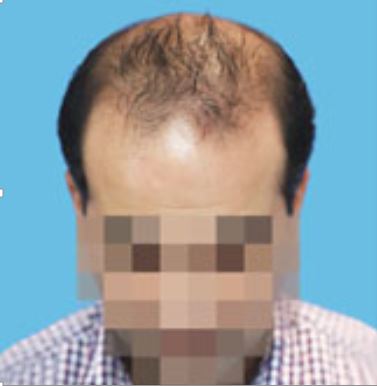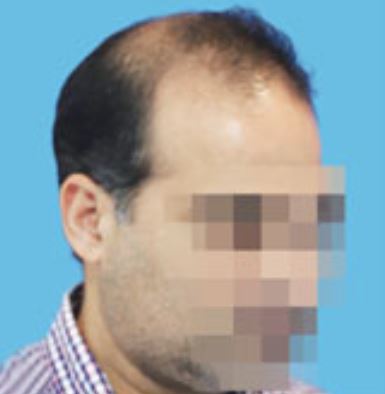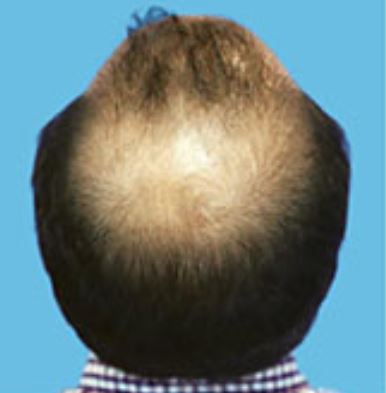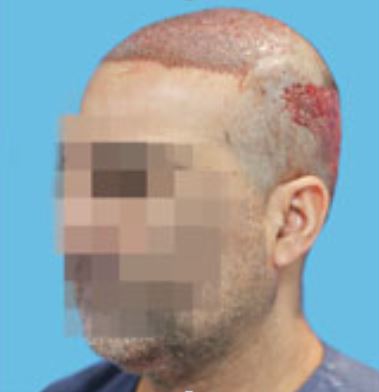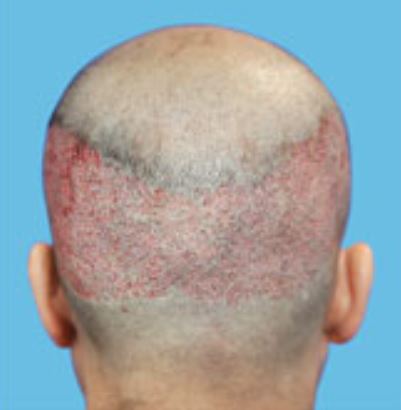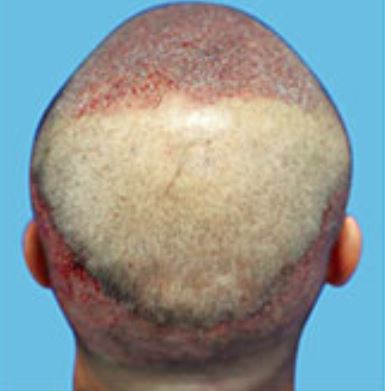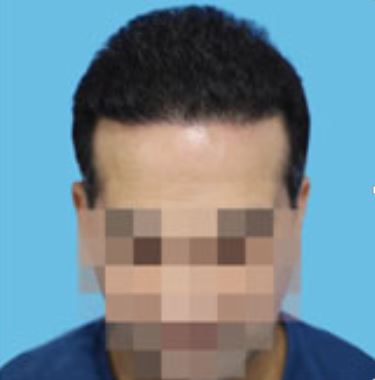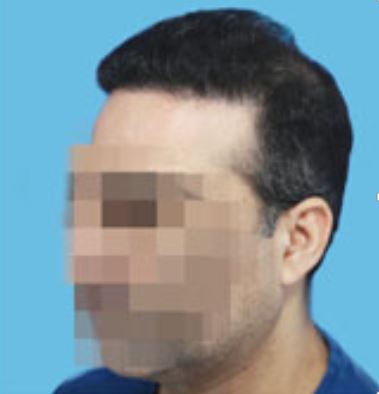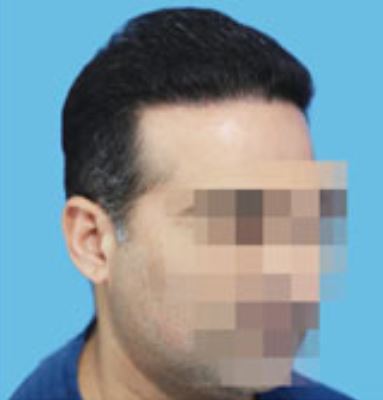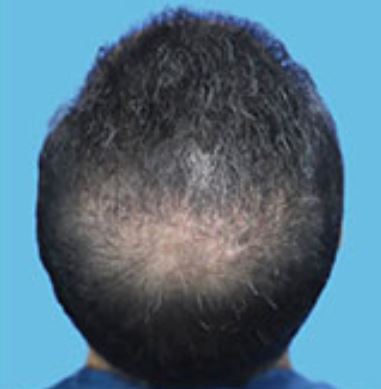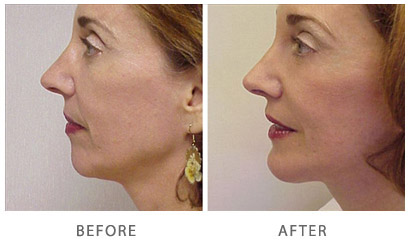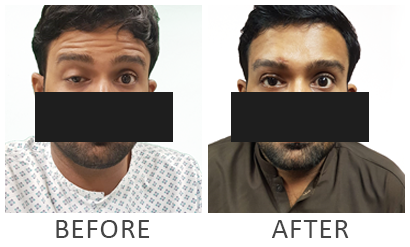Prof. M Shehab Afzal Beg
Consultant Plastic Surgeon Liaquat National Hospital
Introduction
- Alopecia affects almost every third person worldwide. Hair loss significantly effects ones self-image and self-confidence, hence such high demand for hair restoration.
- A good patient selection is of utmost importance in order to get a good result.
- Any scalp pathology should be dealt with first. Scalp folliculitis should be dealt with antibiotics, seborrhea with an antidandruff shampoo and mild steroid if necessary.
Evaluation and workup
- History regarding any bleeding problems, hypothyroidism, hypertension, diabetes mellitus, any medications, drug allergies, vitamin supplements.
- Minoxidil, Fanestride etc
- Medicines like aspirin should be stopped one weeks prior to surgery, clopidogrel should be stopped 5 days prior and heparin and warfarin 24 hours prior. Alcohol / smoking should be stopped 3–4 days before surgery.
Androgenic alopecia
- Androgenic alopecia is poorly understood, androgen with environmental factors and numerous genes, including those for 5-a-reductase, aromatase, and sex-hormone binding globulin.
- The gene mutations causes an increased concentration of 5-alphadihydrotestosterone (DHT), which has a greater affinity for androgen receptors than testosterone or dehydroepiandosterone (DHEA). DHT binding to androgen receptors is thought to induce production of cytokines TGFB1 and TGFB2, which consequently causes dermal papillae to respond by telogen transformation.
- This manifests as male pattern hair loss. Female patients also experience androgenic alopecia, although hair loss tends to be more diffuse over the scalp with maintenance of the frontal hairline.


Counselling
- Dedicated counsellor / care taker
- Show previous results
- Steps of FUE
- What to expect
- Post operative care
- Post op care
Provide factual informations
It is always better to under promise and over deliver
Strip method
- Linear scar
- Prolonged down time
- Need to remove stiches or staplers
- Time consuming
- More team members required
- Post operative hypoesthesia
- Or hyperesthesia
- Minimal graft loss due to transcection
- Large number of grafts available
- Per op better patient comfort
- Fat covered stable grafts
Traditional strip method

Trichophytic Closure Technique

Utilize FUE for hiding linear scars


Follicular unit extraction
- Follicular Unit Extraction (FUE) is a minimally invasive surgical procedure that utilizes a punch device to harvest follicular units that are later transplanted in areas of hair loss.
- FUE captures the benefit of a wide range of available restoration techniques and avoids the disadvantages of traditional strip surgery.
- A number of variations on the procedure are currently in practice and many more exciting advances are underway.
Follicular unit extraction
- FUE was first described in 2002 based on findings by Masumi Inaba, who noted that only the upper third of follicular units, where the errector pili muscle attachment is located, needed be freed by a punch for effective, viable follicle extraction.
- Minimal down time
- No stiches
- No linear scar
- No neurological sequelae
How I do it
Markings



Density check of the donor region by dermatoscope
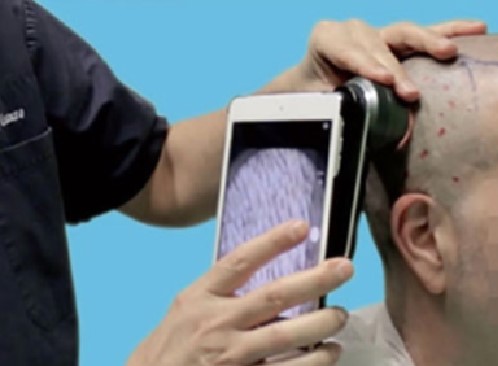
Laser-assist hairline design device which is being used to make a hairline, to ensure the symmetry of the hairline.
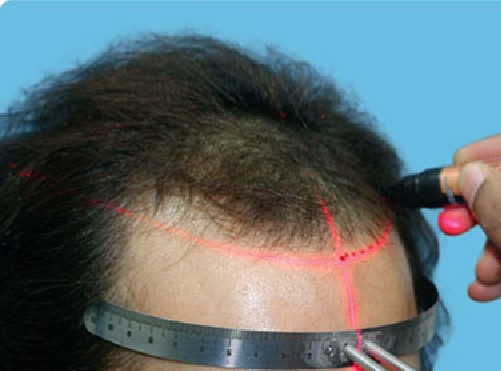
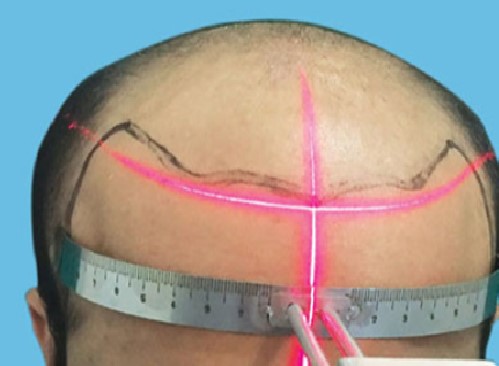
The yellow line depicts the forehead height. The frontotemporal recession lies on the red line extending vertically upward from lateral epicanthal folds

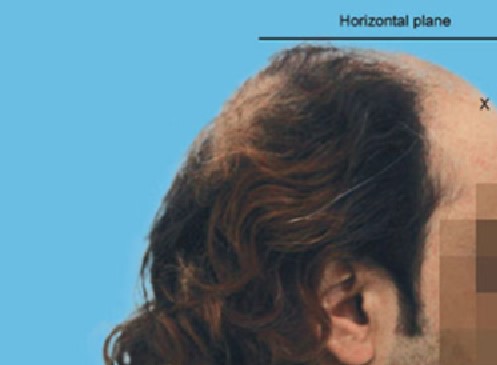
Making of grids as safe donor region
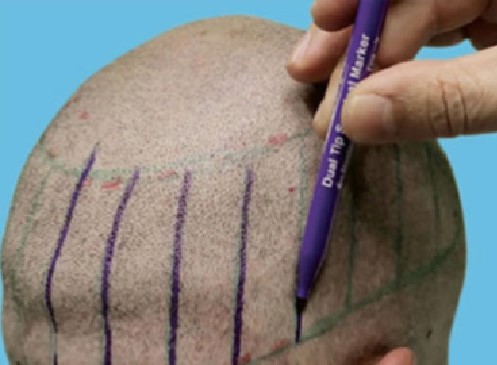
Sites creation
The image depicts the angle of the needle while slit making
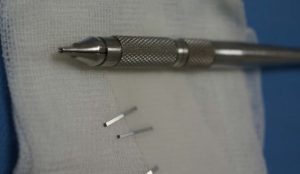
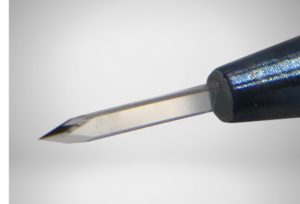
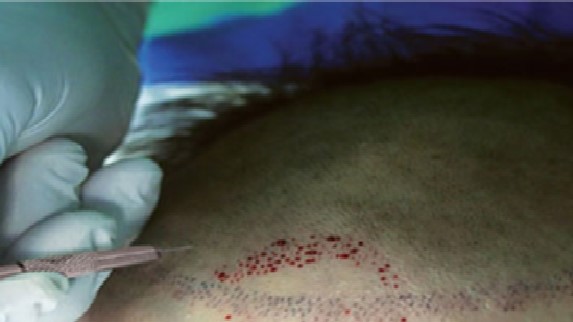
Sites for Single hair follicles at most anterior hair line
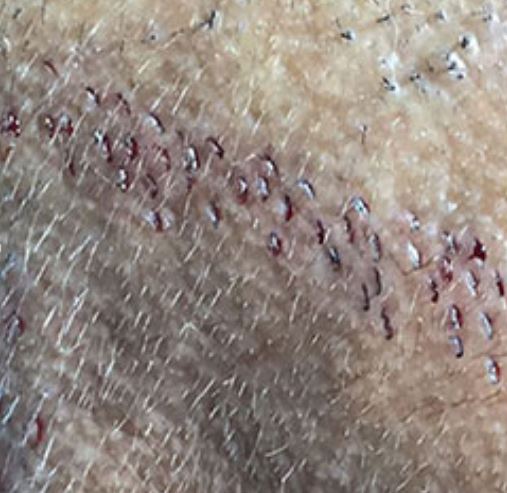

Micro irregularities

Sites creation
Hair direction is important
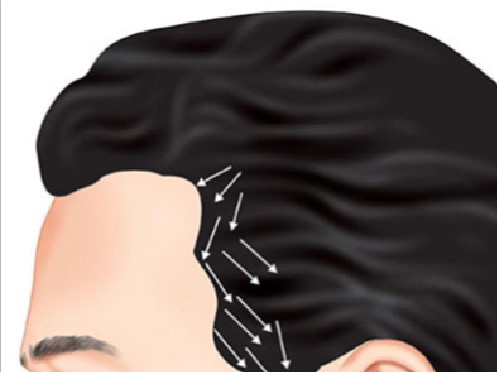
Fill the desired area with correctly directed sites
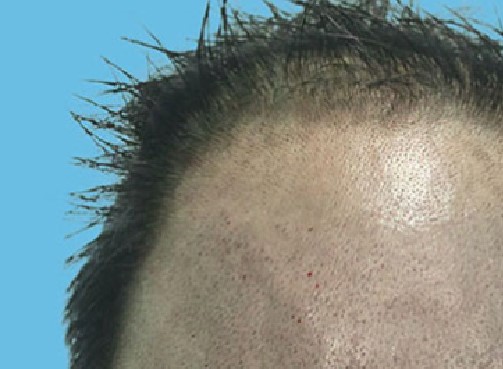
The slits are completed before the extraction process
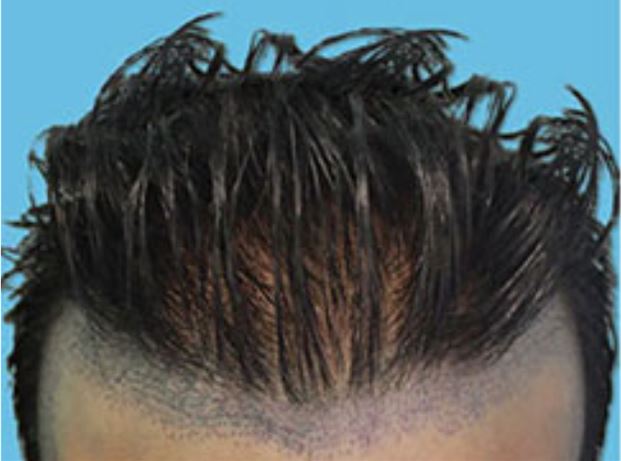
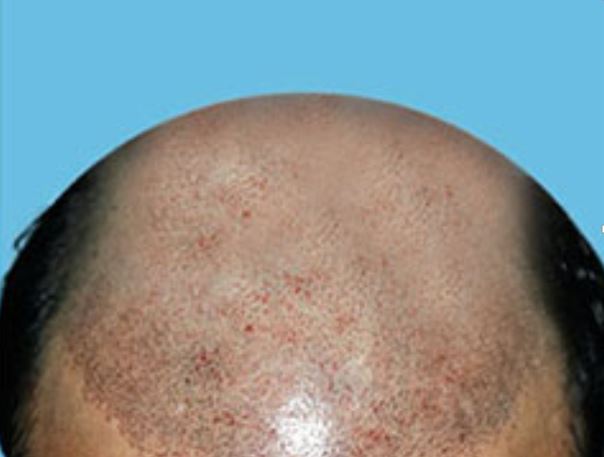
Direction of Sites on crown


Sites ready for placement
Punching
Harvesting Punch


Fue machine


Direction Of punch
Alignment—it means to place the shaft of the punch parallel to the target hair.
Engagement—it refers to the point when the tip of the punch touches the skin surface

Direction of the punch
Nonaligned punch—the shaft of the punch is not parallel to the direction of hair thus, leading to partial or complete transection (Avoid)

Punching
Extraction of follicles
Graft is held firmly from the tip with a straight forceps and pulled with curved forceps

Extraction Process
The curved forceps with a grip is used to push the surrounding skin around the graft downward to expose the lower part of grafts

Extraction of follicles
The force is applied by the straight forester to pull the grafts in the direction of hair growth
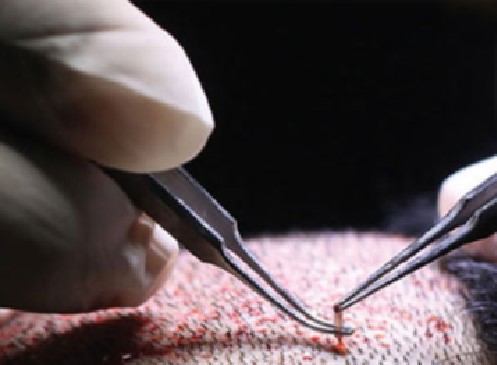
Extraction of Follicles
Sorting and Storage
Good quality grafts with minimum or no fat
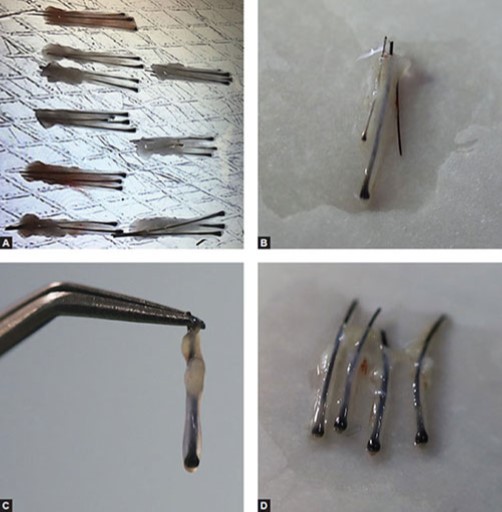

Transected Follicles
Sorting Of Follicles
Implantation Of Follicles
Implanter

Graft is held from the epidermal end and pushed from behind through the channel

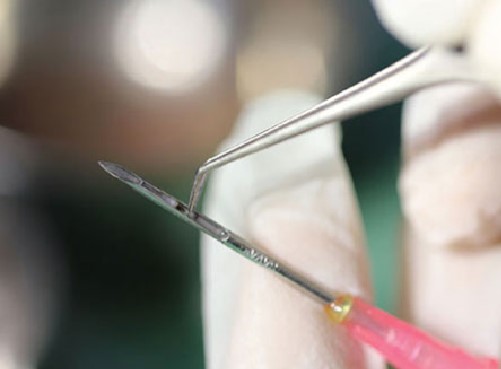
The graft has to reach the mid-point of the bevel for correct unloading during implantation. The implanters are inserted in alignment with sagittal slits


After inserting the implanter fully, the implanter is rotated by 90° to dilate the slits. The graft is pushed with forcep from the top till graft is inserted.
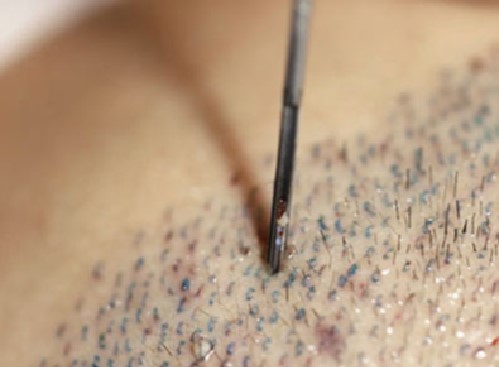
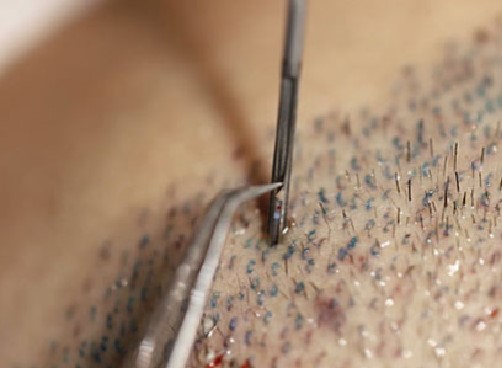
The graft is pushed inside the slits. The epidermal portion of the grafts remain protruded out.
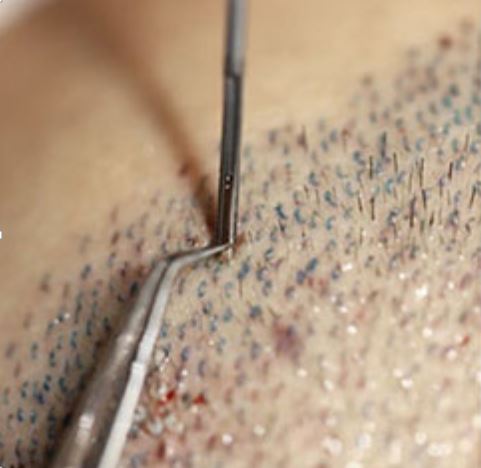
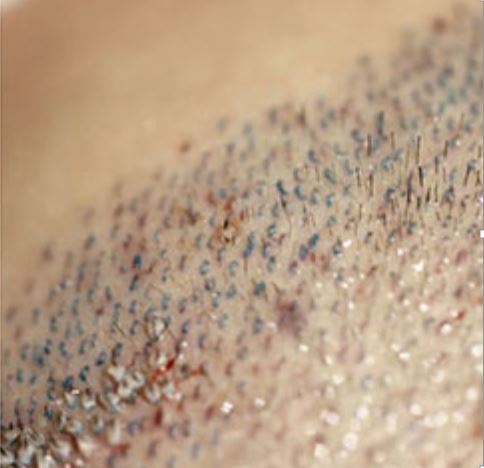
Or you can just use forceps making sure not to damage the hair follicles
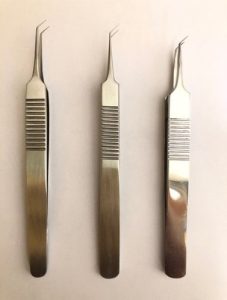
Follicle should be implanted in pre-formed slits in close to normal hair directions

Graft Placement
Graft Placement
Red arrow: Defined zone area with more densely packed grafts.
Green arrow: Transition zone area with 1–2 hair follicle grafts.
Black arrow: Irregular anterior border showing microirregularities

Washing after implantation
Completion
One representative case
